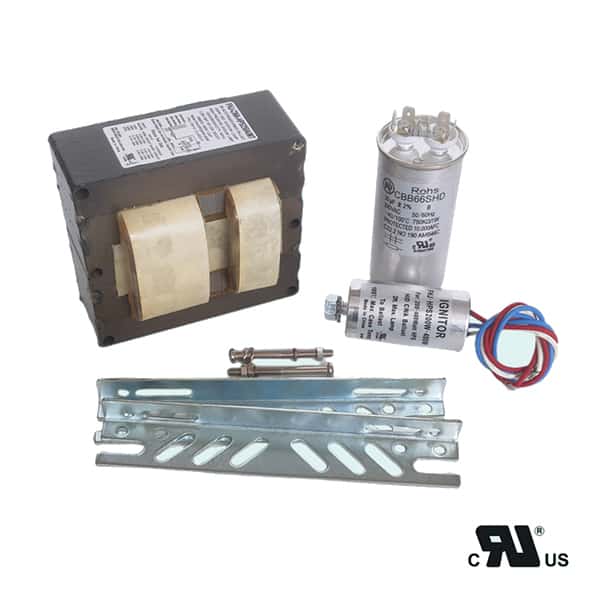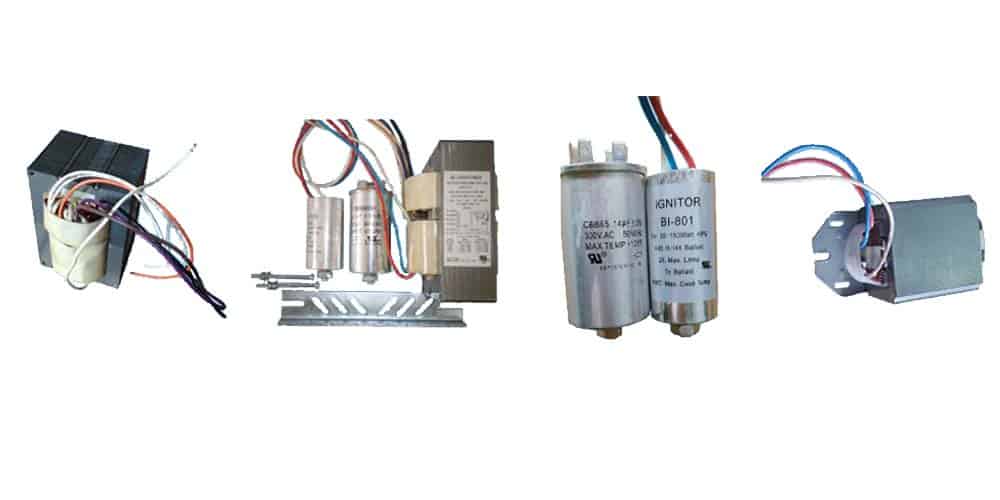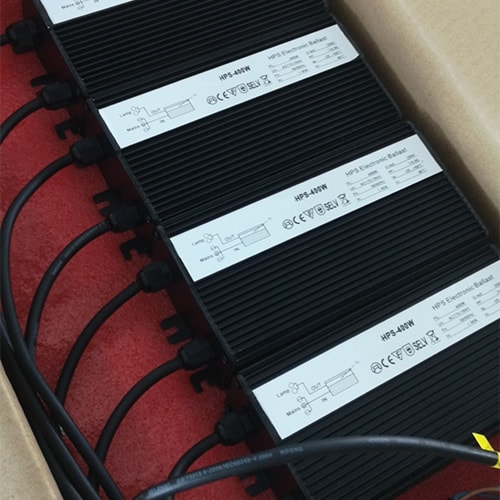In fluorescent lighting, picking the right lamp ballast is important to make sure your lights work well, use less electricity, and last a long time. One type of ballast you can use is an instant start ballast. These make your lights turn on really fast without needing to warm up the inside parts of the bulb. These are good for places where you keep your lights on all the time, which is why they’re used a lot in businesses and factories.
An instant start ballast makes your fluorescent lights turn on right away by giving them a big electrical push to get started. Unlike other ballasts that need to warm up the inside parts of the bulb, an instant start ballast makes the light turn on right away. These are good for places where you keep your lights on all the time to make sure you don’t use too much electricity.
Knowing what instant start ballasts do, and what’s good and bad about them, will help you pick the right lighting system for what you need.
What Is an Instant Start Ballast?
An instant start ballast is a type of electronic ballast used primarily in fluorescent lighting systems. Its defining feature is its ability to ignite the lamp almost instantly, without the need to warm up or preheat the cathodes (electrodes).
Definition
An instant start ballast provides a high-voltage pulse (usually around 600 volts) to the fluorescent lamp when the power is switched on. This high voltage is enough to strike an arc between the electrodes, creating light within milliseconds. Since there is no preheating phase, the lamp lights up instantly, providing immediate full brightness with no delay.
How It Works
Unlike rapid start or programmed start ballasts, which preheat the lamp’s electrodes before igniting the arc, instant start ballasts deliver a powerful voltage across the lamp’s electrodes to initiate the lighting process. This immediate ignition allows for quick and efficient lighting without any warm-up time.
Instant start ballasts are designed to work with T8 and T12 fluorescent tubes, which are common in many commercial and industrial applications. The high-voltage pulse created by the ballast is enough to ionize the gas within the lamp, leading to a quick ignition.
Design Purpose
Instant start ballasts are specifically designed for applications where lighting is left on for long periods. This is because the high-voltage pulse used in instant start ballasts can cause stress to the lamp’s electrodes over time, reducing its lifespan if the lights are turned on and off frequently. As a result, these ballasts are most effective in spaces where the lights are not frequently switched, such as offices, warehouses, or large commercial buildings.
Key Features of Instant Start Ballasts
Instant start ballasts offer several distinct features that make them an attractive choice for certain lighting setups. These features cater to environments where immediate lighting and energy efficiency are critical.
Immediate Ignition
The primary advantage of an instant start ballast is that it provides immediate ignition. Once the switch is flipped, the ballast sends a high-voltage pulse through the lamp, which lights up in less than a second. This eliminates any warm-up time or flickering that can occur with older lighting technologies.
High Voltage
Instant start ballasts deliver a significantly higher initial voltage compared to other ballast types. This high voltage is required to ionize the gas inside the fluorescent tube, enabling it to produce light instantly. This is particularly beneficial in applications where full, immediate brightness is required without waiting for the lamps to warm up.
Energy Efficiency
Because instant start ballasts do not require continuous power to preheat the lamp’s electrodes, they are more energy-efficient than rapid start or preheat ballasts. This makes them ideal for applications where lights are left on for long periods, as they reduce overall power consumption. In comparison to other ballast types, instant start ballasts typically consume less energy during operation, which can translate to lower energy costs in large-scale lighting systems.
Cost Efficiency
In addition to being energy-efficient, instant start ballasts tend to have a lower upfront cost compared to other types of ballasts. This makes them a cost-effective option for installations where energy savings and quick ignition are priorities. They also have fewer components than some other ballast types, which can lead to lower maintenance costs over time.
Instant Start Ballasts vs. Other Ballasts
Instant start ballasts are one of several types of ballasts used in fluorescent lighting systems. Each type of ballast offers unique features and advantages, and choosing the right one depends on the specific needs of your lighting environment.
Instant Start vs. Rapid Start Ballasts
The main difference between instant start and rapid start ballasts lies in the ignition process. While an instant start ballast ignites the lamp immediately by applying a high-voltage pulse, a rapid start ballast preheats the lamp’s electrodes before applying voltage. This preheating phase helps reduce the stress on the electrodes, which can extend the lifespan of the lamp. However, rapid start ballasts use more energy because they constantly draw power to keep the electrodes warm.
Rapid start ballasts are better suited for environments where lights are frequently turned on and off, as they reduce the wear and tear on the lamp. Instant start ballasts, on the other hand, are more energy-efficient in applications where the lights remain on for long periods but may shorten the lamp’s lifespan in high-frequency switching scenarios.
Instant Start vs. Programmed Start Ballasts
A programmed start ballast offers an even more sophisticated approach to starting the lamp by gradually preheating the electrodes before igniting the lamp. This results in a soft start that greatly extends the life of the fluorescent lamp, especially in environments where lights are turned on and off frequently, such as in spaces with occupancy sensors.
While instant start ballasts provide immediate lighting and are more energy-efficient for long-term use, programmed start ballasts are ideal for applications where lamp longevity is a priority. Programmed start ballasts are commonly used in offices, classrooms, and other spaces where lights are often cycled on and off.
Preheat Ballasts
Preheat ballasts are another type of ballast, primarily found in older fluorescent lighting systems. These ballasts rely on a starter to preheat the lamp’s electrodes before ignition. The starter creates a brief delay while the electrodes warm up, and once they are heated, the lamp ignites. While preheat ballasts are not as common today, they offer an inexpensive option for small-scale lighting setups.
In comparison, instant start ballasts eliminate the need for preheating or a starter, providing faster ignition and improved efficiency.
Advantages and Disadvantages of Instant Start Ballasts
Advantages
- Immediate Ignition: Instant start ballasts light up the lamp within milliseconds, providing full brightness with no warm-up time or flickering.
- Energy Efficiency: Since instant start ballasts do not require electrode preheating, they are more energy-efficient than other types of ballasts, making them ideal for large commercial spaces where lights are left on for extended periods.
- Lower Cost: Instant start ballasts are typically more affordable upfront, and their energy efficiency can result in long-term cost savings.
- Simplicity: With fewer components than programmed or rapid start ballasts, instant start ballasts tend to have lower maintenance requirements.
Disadvantages
- Shortened Lamp Lifespan: The high voltage used in instant start ballasts can stress the lamp’s electrodes, reducing the lamp’s overall lifespan in applications where lights are frequently turned on and off.
- Not Suitable for High-Cycle Environments: Instant start ballasts are not ideal for areas with occupancy sensors or other systems where lights are frequently cycled. The frequent high-voltage ignition can wear out the lamp prematurely.
- Limited to Long-Term Use Applications: Instant start ballasts are most efficient in environments where the lights are left on for long durations, such as offices or warehouses. For environments requiring frequent switching, a programmed start or rapid start ballast may be a better choice.

Where Instant Start Ballasts are Commonly Used
Instant start ballasts are most commonly used in commercial and industrial environments where lights are left on for extended periods, such as:
- Offices: In spaces where lighting remains on for long hours throughout the day, instant start ballasts provide efficient, consistent lighting.
- Warehouses: Large open spaces like warehouses benefit from instant start ballasts because the lighting is typically left on during working hours, and there is no need for frequent on-off switching.
- Retail Spaces: Retail environments often require consistent lighting for long periods, making instant start ballasts a good choice for maintaining energy efficiency while ensuring immediate illumination.
Not Ideal for Frequently Switched Systems
Instant start ballasts are not recommended for use in environments where lights are frequently turned on and off, such as homes with motion sensors or bathrooms with occupancy sensors. In these settings, the high-voltage ignition can wear out the lamp more quickly, leading to higher replacement costs and more frequent maintenance.
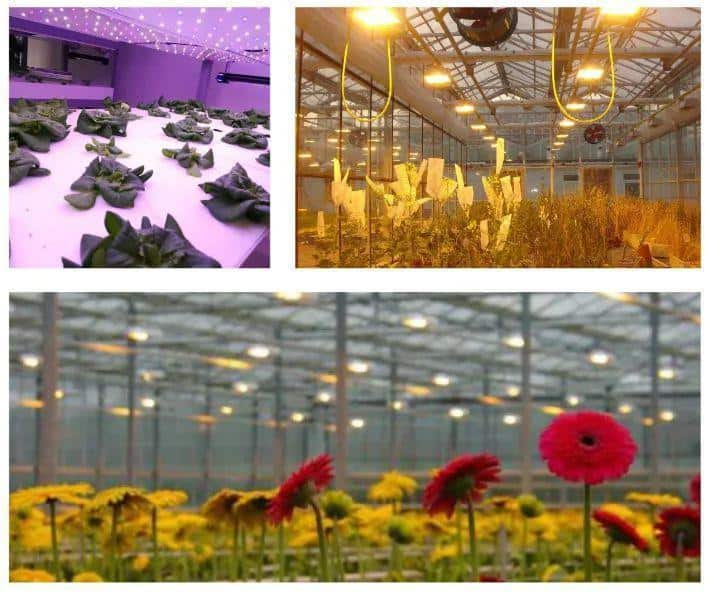
When to Choose an Instant Start Ballast
When selecting the right ballast for your lighting system, it’s essential to consider the specific needs of your environment.
Best for Long-On Periods
Instant start ballasts are ideal for settings where lights are typically left on for long periods without frequent switching. If you’re lighting an office, retail store, or large commercial space, an instant start ballast can provide the quick startup and energy efficiency you need.
Energy Efficiency Considerations
Instant start ballasts contribute to energy savings, particularly in large-scale commercial operations. By eliminating the need for electrode preheating, these ballasts reduce energy consumption, making them a cost-effective solution for environments with long-term lighting needs.
Lamp Longevity Concerns
If lamp longevity is a priority, and your lights are switched on and off frequently, consider other types of ballasts, such as programmed start ballasts, which reduce stress on the electrodes and extend the life of the lamp.
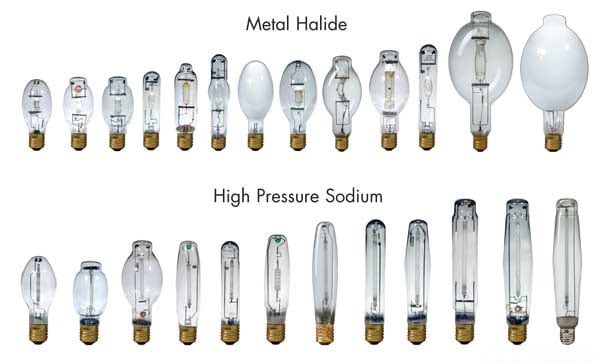
Final Words
An instant start ballast makes your fluorescent lights turn on right away and uses less electricity. This makes them a good choice for places where you keep your lights on all the time. Even though they save you electricity and make your lights turn on right away, they aren’t the best for places where you turn your lights on and off a lot because that can make your lights not last as long.

